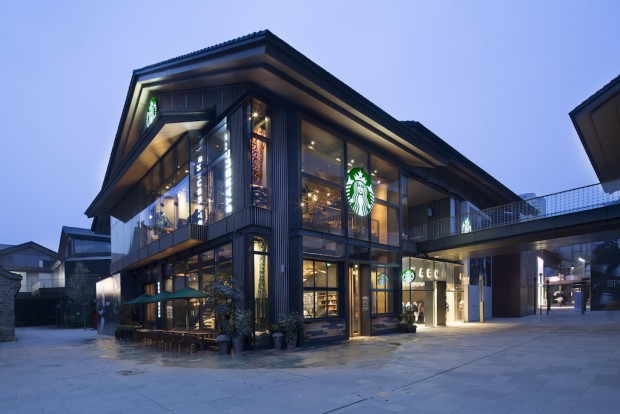While hard data is historically limited, China has by all accounts represented one of the world’s fastest-growing coffee markets in recent years, both in terms of production in the primary growing region in Yunnan, and in consumption, where tea is slowly but consistently losing ground to coffee both in the specialty and non-specialty realms.
At the 115th Session of the International Coffee Council that took place in Milan, Italy, from Sept. 28 to Oct. 2, representatives of the London-based International Coffee Organization provided one of the most comprehensive and data-driven views of the Chinese coffee market to date, shedding light on what the huge market’s consumption growth and reimagined production efforts might mean for the global coffee community.
The ICO said the double-digit annual growth in Chinese production and consumption have made it a larger producer than Kenya and Tanzania combined, while annual total consumption throughout the country now outpaces that in coffee-loving Australia.
“As the economy of China continues to grow, the pool of consumers with disposable income expands and demand for coffee rises accordingly,” the ICO recently said in a summary of its report. “The presence of coffee shops is no longer a novelty, but rather an essential feature of the urban landscape. Although still predominantly a tea-drinking nation, China is rapidly developing a taste for coffee, which could have significant implications for the world market.”
Drawing from its own collection of monthly import and export figures over the past 20 years, the ICO suggested that consumption has been growing at an average annual rate of 16 percent over the past 10 years, a number in part driven by the increased presence of coffee shops in urban areas.
It is important to note that premium, specialty-level coffee is driving only a sliver of Chinese consumption growth overall. With a population pushing 1.4 billion people, China’s per capita coffee consumption remains remarkably low — at five to six cups per person per year — and the coffee consumed is primarily of the instant variety, which represents some 99 percent of the consumption share. Additionally, tea remains the dominant hot drink in China, with an approximately 10-to-1 share over coffee.
The ICO likened China’s import trends to those witnessed in Japan 50 years ago, with predominantly green, unprocessed robusta coming into the market for the domestic production of soluble coffee products. “Japan now has an advanced coffee culture, composed predominantly of arabica and with a developed processing capacity,” the ICO stated. “This process took 30 to 40 years in Japan, and China is still very much in the early stages of its coffee development.”
Hoping to get in on the ground floor of arabica growth, we’ve seen large U.S.-based retail companies such as Starbucks and Coffee Bean & Tea Leaf make significant investments in the Chinese market, while numerous other green coffee and roasting-related businesses based in North America and other predominantly consuming countries have also set up shop in major urban centers with branch offices.
Private investment has also heavily increased over the past two years alone on the production end, where companies including Starbucks and Nestlé have established large-scale operations in the Yunnan province, where some 95 percent of Chinese coffee is grown. Earlier this year, we shared news that the Yunnan Coffee Exchange was being developed to help promote production growth of Chinese specialty-grade coffee. The ICO now reports that “The Coffee Association of Yunnan has recently announced plans to invest RMB3 billion (US$480 million) in coffee over the next ten years. This investment is to be used to improve soil quality, build research centers and provide training to coffee growers, expanding both the area of plantation and production.”
All of this has widespread implications for the global trade, particularly if the nascent trend toward premium arabica consumption continues its growth in China. “The overall impact of the Chinese coffee sector on the global coffee economy is as yet undetermined,” the ICO said. “By driving up both production and consumption in relatively proportional amounts, China is currently a broadly neutral presence on the global balance sheet. However, the dynamics of these two trends are very different, with production composed almost entirely of arabica coffee and consumption currently favouring robusta. A more in-depth analysis of these trends would be facilitated by more data.”
Click here for the full ICO report, including an explanation of the statistical methodology used to process the past 20 years of data from China.
Nick Brown
Nick Brown is the editor of Daily Coffee News by Roast Magazine.
Comment
2 Comments
Comments are closed.








Hello there Nick. My name is Joan.I really enjoy reading your articles. I however would like to point out that Starbucks did not open its flagship shop in Chengdu in 2014. I was staying in China from 2011, and I remember enjoying a cup of Starbucks coffee in 2012 and 2013 in Guangzhou City. Please confirm the facts, because it takes due diligence to stand out from all the other gutter sites. Thank you
DEAR SIR / MADAM.
MY NAME IS DONALD ALDRIDGE, I OWN ABOUT 80 ACRES OF LAND IN THE RIO GRANDIE FELLOWSHIP REGEN,
IN A VILLAGE CALLED MILLBANK PART OF THE BLUE MOUNTAIN IN PORTLAND JAMAICA, PRIME COFFEE
GROWING LAND, WOULD YOUR COMPANY BE INTERESTED IN SPONSORING = PROTECTING PRESERVING
PROMOTING PLANTING GROWING AND REAPING COFFEE IN JAMAICA ? I WOULD LIKE TO TALK TO SOMEBODY
ABOUT GROWING COFFEE, MY NUMBER IS 07572924144 …. THANK YOU